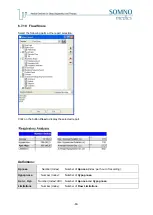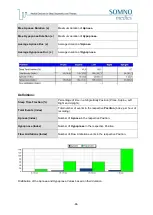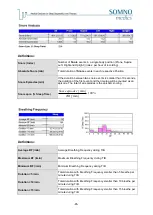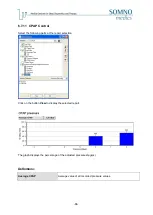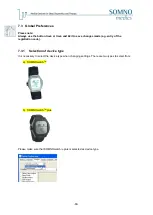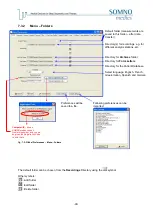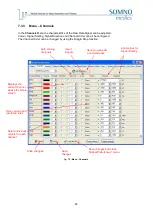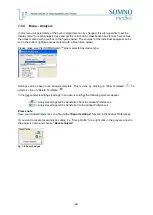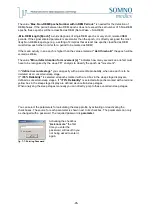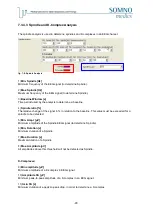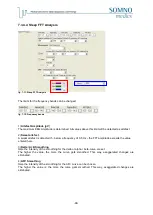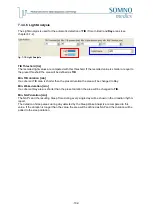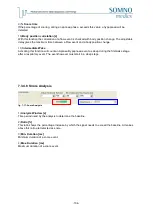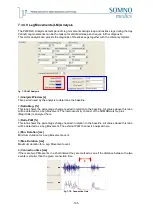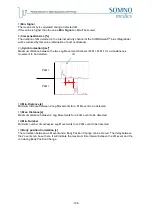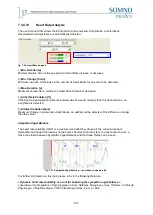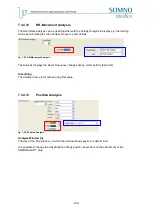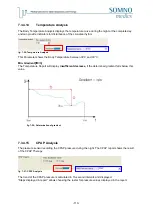
-97-
7.3.4.3 Spindle and K-Complex Analysis
The spindle analysis is used to determine spindles and K-complexes in an EEG channel.
fig. 7-9: Spindle Analysis
1)
Min. Spindle [Hz]
Minimum frequency of the EEG signal (to determine Spindle).
2)
Max. Spindle [Hz]
Maximum frequency of the EEG signal (to determine Spindle).
3)
Baseline Window [s]
Time period used by the analysis to determine a baseline.
4)
Spindle ratio [%]
The relative change of the signal in % in relation to the baseline. This value must be exceeded for a
spindle to be detected.
5)
Min. Ampl. [µV]
Minimum amplitude of the Spindle EEG signal (to determine Spindle).
6)
Min. Duration [s]
Minimum duration of a Spindle.
7)
Max. Duration [s]
Maximal duration of a Spindle.
8)
Max. Amplitude [µV]
All amplitudes above this threshold will not be detected as Spindle.
K-Complexes:
9)
Min amplitude [µV]
Minimum amplitude of a K-complex in EEG signal.
10)
Amplitude SS [µV]
Minimum peak-to-peak amplitude of a K-complex in an EEG signal.
11)
tmin SS [s]
Minimum duration of a peak-to-peak drop, in order to determine a K-complex.
Summary of Contents for SOMNOwatch plus
Page 24: ...24 Body Temperature fig 6 8 Montage Temperature EDA fig 6 9 Montage EDA...
Page 25: ...25 Sleep Profile fig 6 10 Montage Sleep Profile ECG Analysis fig 6 11 Montage ECG...
Page 26: ...26 Training Rehab fig 6 12 Montage Training Rehab Flow Snore fig 6 13 Montage Flow Snore...
Page 42: ...42 Body Temperature fig 6 22 Analysis Template Temperature EDA fig 6 23 Analysis Template EDA...
Page 43: ...43 Sleep Profile fig 6 24 Analysis Template Sleep Profile...
Page 63: ...63 Choose the item Activity profil within the Select Report window...
Page 72: ...72 recording on both legs...
Page 162: ...162 10 9 Notes...

